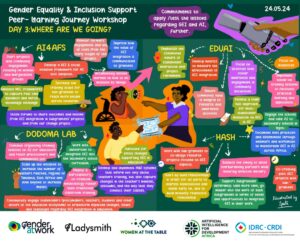This November, Toronto officially opened its first “Canadian Center for Men and Families..” Supported by the Canadian Association for Equality (CAFÉ), the center will address problems facing men in today’s society, and will provide a range of services including mentorship, counseling, and support groups for victims of abuse. The opening is already causing controversy, with CAFÉ claiming that although their main goal is to break down gender barriers, they have faced pushback from the feminist community. Women’s rights activists point to their association with several misogynistic men’s rights groups in the US, and claim that CAFÉ is more frustrated with women’s rights being promoted than men’s rights being violated. This divergence between men’s issues and feminist activism goes beyond this one center, and into the broader concern of how to improve gender relations in Canada. How do we find productive ways of engaging men on gender equality, without it turning into a he said-she said battle over who has rights to vulnerability and harm?
Let’s make this clear right off the bat: there are real and important issues effecting men in our society. Increasing rates of mental health and suicide, addiction, and the lack of services for abuse all deserve our attention. Stereotypes of what it means to be “a man” can lead to harmful notions of masculinity, that at best constrain the ways men feel they can express their emotions, and at worst, lead to cycles of violence. These are real problems, and do need to be addressed.
As someone who cares deeply about global discrimination towards women, however, the fine line between discussing contemporary issues facing men and completely sidetracking the conversation around gender equality makes me uncomfortable. Our society operates in an environment where women are still over- represented as victims of violence, and under-represented in positions of decision- making. Activists have fought for years to get gender equality to be seen as a priority, and Canada is still very far from making progress on these issues. As a new report launched by the Canadian Coalition for Policy Alternatives demonstrates, 34 out of every 1000 women in Canada have reported a sexual assault, and over 6.4% of women have reported intimate partner violence. As these are thought to only be 10% of actual cases, in reality, the numbers are much higher. When it comes to looking at women’s roles in decision-making, women make up only 25% of MPs, 14% of board members, and only 3% of CEO’s.
Any approach toward tackling societal inequity must take into account this uneven impact still placed on women. In addition to failing to adequately address gender constraints, we’re also operating in a climate where there are fewer and fewer resources allocated to alleviating women’s inequality. Canada does not have a stand-alone policy on violence against women, in addition to only directing minuscule resources to the Status of Women Canada. Because of funding cuts, the Status of Women was forced to close 12 out of its 16 regional offices, and support has been cut to operations such as Women’s Centers of Excellence and research and advocacy organizations.
I am not arguing that just because resources for women are being slashed should automatically mean that we don’t have the space to address challenges facing men – that is definitely not the case. Yet, it makes me uneasy to think that discussions around women’s inequality may get inadvertently stifled by men wanting to change the conversation. If we want to create new spaces to address male issues in Canada, this must not be at the expense of failing to recognize the disproportionate social inequities women continue to face.
Gender equality is not a zero-sum game. If there is going to be any sustainable progress on combatting discrimination, we need to find ways to include men and boys into these conversations. Campaigns such as UN Women’s #HeforShe movement, or Canada’s White Ribbon campaign recognize this, and we’re seeing a global shift in trying to find new strategies to engage men in the fight for women’s rights. This recognition does mean that we need to make sure to include the voices of men (and all other categories across the gender continuum) who also feel the impact of gender constraints. The same societal forces that perpetuate violence against women also lead to harmful and aggressive masculinities; we must recognize that what holds women back from reaching their full social, economic, and political potential can also have negative impacts on men as well. Creating spaces where men can talk about the challenges they face, as well as topics such as consent, positive masculinity, and how to be allies to women, could be a helpful tool to realize the goal of a more equal and peaceful society.
No one is arguing that gender polarization isn’t detrimental for both men and women. Do I think that the new Men’s Center will be a positive step in combatting this? I’m still not sure. If this turns into a debate about how “women have their space, now give us ours”…. then I want no part in that discussion. But if this opens up new ways for men and women to combat harmful gender inequalities together, well then, that’s something worth supporting.
by KAILEE JORDAN



